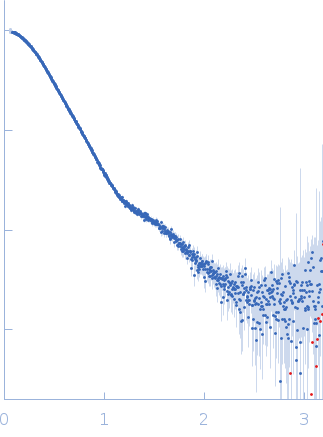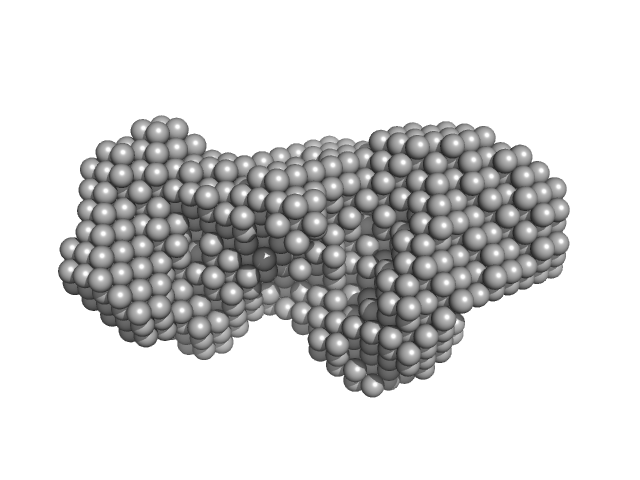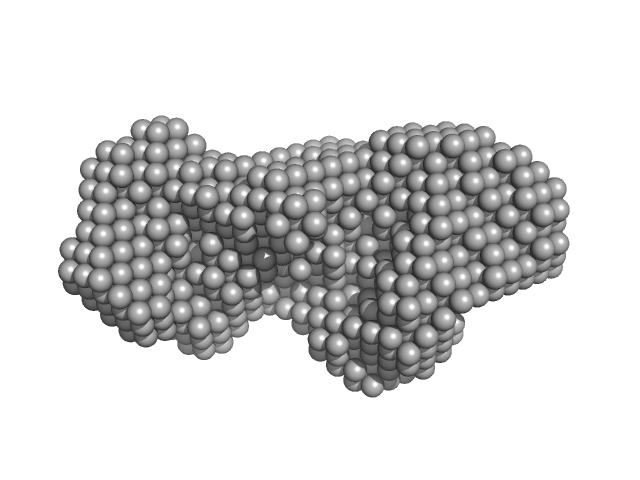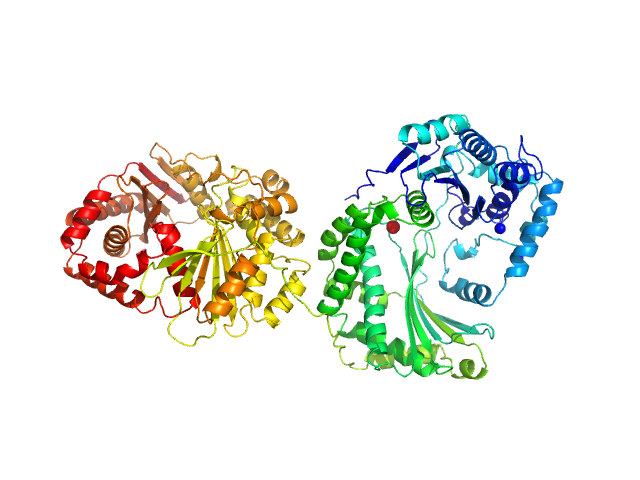|
Synchrotron SAXS data from solutions of periplasmically localised protease (PqqL) from E. coli in 20 mM Tris HCl, 150 nM NaCl, 0.02 % NaN3, 5% glycerol, pH 7.8 were collected on the SAXS/WAXS beam line at the Australian Synchrotron (Melbourne, Australia) using a Pilatus 1M detector at a sample-detector distance of 1.4 m and at a wavelength of λ = 0.10322 nm (I(s) vs s, where s = 4πsinθ/λ, and 2θ is the scattering angle). In-line size-exclusion chromatography (SEC) SAXS was employed using a co-flow apparatus. The SEC parameters were as follows: A 100 μl sample at 8 mg/ml was injected onto a GE Superdex 200 Increase 5/150 column at 20°C. 10 successive 1 second frames were collected through the SEC elution peak. The data were normalized to the intensity of the transmitted beam and radially averaged; the scattering of the solvent-blank was subtracted.
|
|
 s, nm-1
s, nm-1


